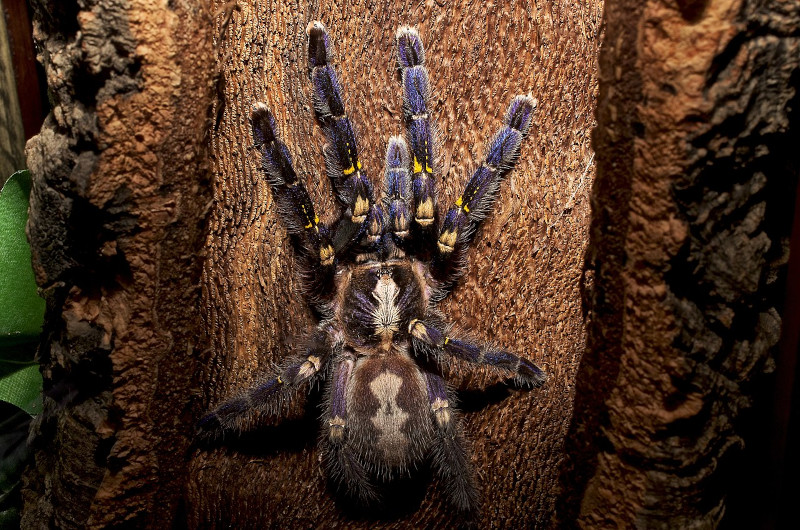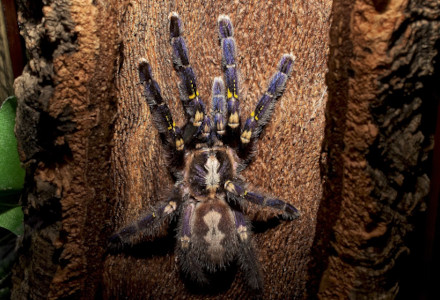
Photo Credit: B a y L e e ‘ s 8 Legged Art
CC License: https://bit.ly/3fU0Yfb
Gooty Sapphire Tarantula Facts
- Firstly, the visually stunning Gooty Sapphire Tarantula forms a true gem among arachnids. Sadly, however, it also ranks as quite rare. Due to this fact, the IUCN lists the spider as Critically Endangered.
- Also, the unique common name partly derives from the area it inhabits. That’s because the name of the small town where modern man first discovered this beautifully colored spider is Gooty.
- But quite sadly, its distinctive coloring also serves to endanger the amazing species in the wild. Due to its brilliant coloring, it continually ranks as a favorite among collectors of tarantulas.
- Finally, the invertebrate inhabits an extremely small territory, which now faces threats from logging efforts. This, combined with its popularity, comprises the greatest threat to its existence.
Related Articles
Hobo Spider Peacock Spider Lichen Spider
Photographer: Micha L. Rieser
Public Domain Image
Gooty Sapphire Tarantula Physical Description
The most immediately noticeable physical characteristic of the Gooty Sapphire Tarantula remains its brilliant metallic blue coloring. It also displays a remarkable fractal-like pattern displayed on the abdomen.
In addition, it forms a rather large species, capable of attaining leg spans of as much as 8 in (20 cm). Given the span of its legs, the remarkable spider also has the ability to move quite rapidly.
Finally, sexual dimorphism remains present in the Gooty Sapphire Tarantula, in regards to longevity. This occurs because the females of the species average a lifespan four times that of the males.
- Kingdom: Animalia
- Phylum: Arthropoda
- Class: Arachnida
- Order: Araneae
- Family: Theraphosidae
- Genus: Poecilotheria
- Species: P. metallica
Photographer: Morkelsker
Public Domain Image
Gooty Sapphire Tarantula Distribution, Habitat, and Ecology
The Gooty Sapphire Tarantula also has an extremely tiny known natural range. That’s because its only known naturally occurring population occurs in Andhra Pradesh, in southern India, in Asia.
Its entire known habitat is comprised of a deciduous forest that covers a mere 39 sq mi (100 sq km). But, even though the region is a protected reserve, illegal logging threatens its existence.
The Gooty Sapphire Tarantula is also primarily an arboreal arachnid by nature. Yet it will descend to the ground in search of food if need be. Individuals typically inhabit small holes in local trees, where they construct funnel webs.
Further, the primary prey of the stunning arachnid consists of a variety of insects. However, it can prey upon small mammals, such as mice when the opportunity presents itself.
Finally, while not considered fatal under normal conditions, its venom produces extreme pain. Yet, even when none is injected, the sheer size of the fangs (3/4 in) can make the bite quite painful.
Species Sharing Its Range
Indian Bullfrog Kurinji Caracal
Check out our other articles on Native North American Mammals, White Spotted Puffer, Milford Sound, Irrawaddy Dolphin, Gympie-Gympie, Gambian Spotted-Eye Flower Mantis

